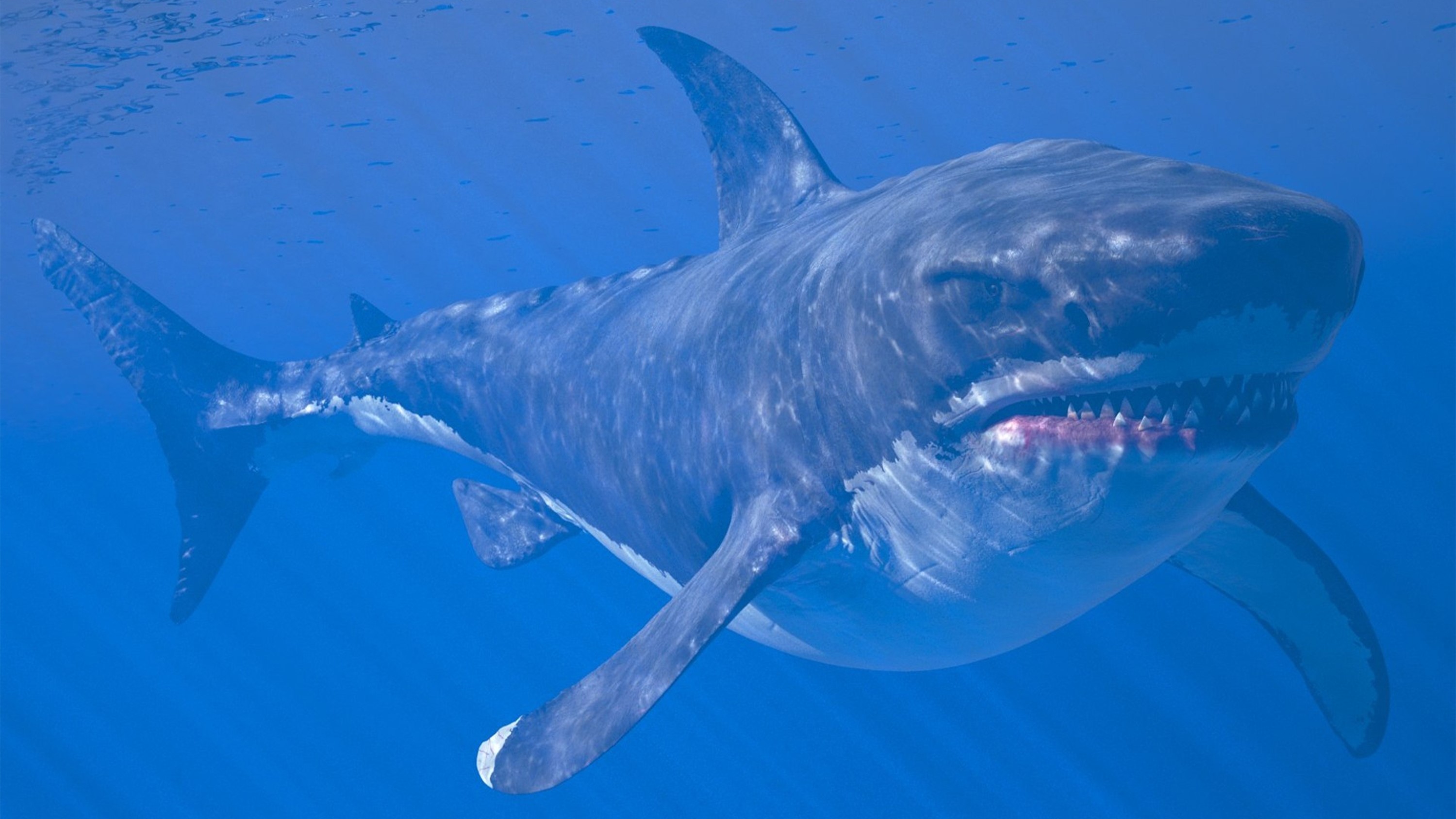
Megalodon, the biggest shark to have ever lived, may not have looked like an uber great white shark as is generally assumed — but instead may have been longer and thinner, scientists have revealed.
By reanalyzing the incomplete spine of a fossilized megalodon (Otodus megalodon) held at the Royal Belgian Institute of Natural Sciences (IRSNB) in Brussels, the team found discrepancies in previous reconstructions, which suggested these supersized shark had a body length of around 52 feet (16 meters) and a shape resembling great white sharks.
"The previously published reconstruction of Megalodon skeleton and body shape looked very awkward," co-author Kenshu Shimada, a paleobiologist at DePaul University in Chicago, told Live Science in an email.
The team of 26 shark experts revealed their findings in a new study, published Jan. 21 in the journal Palaeontologia Electronica.
Great white sharks (Carcharodon carcharias) are often used as a model to inform estimates about megalodon's size and what it might have looked like. This is because shark skeletons are made largely of cartilage — which is less likely to be preserved as fossils than bone — so scientists have only found fossilized teeth and vertebrae from megalodon. As a close relative and apex predator with similar diet and traits, great whites are thought to be an appropriate model.
Related: What did 'the meg' look like? We have no idea
In the new study, the researchers examined CT scans of a juvenile great white’s vertebral skeleton and then compared it to the vertebra of the megalodon specimen. Their findings showed differences in the growth of the centrum — the solid, central part of the vertebrae. In living Lamniform sharks (the order that megalodon and great whites belong to), centrum growth relates to girth, the team wrote. The megalodon's vertebral column was found to be much thinner than the great white's, which they interpret as meaning the meg was far more slender than a great white.
The previous analysis suggested a vertebrae length of 36.4 feet (11.1 m), but the new findings indicate this would have been the minimum length. The researchers say megalodon was likely longer and slimmer, so it might not look like the great white shark model after all. "We still don't know the exact shape of its head, fins, or tail," Shimada said.

Instead, megalodon might have resembled something closer to a mako shark (Isurus oxyrinchus), co-lead author Phillip Sternes, a biologist at University of California Riverside, said in a statement.
So, how big could megalodon have been? The researchers don't want to give a definitive length without solid evidence, but this new information suggests it could have "easily" reached 50 feet (15 m) long and may even have reached 66 feet (20 m) "or possibly slightly more," Shimada said.
"The reality is that we need the discovery of at least one complete Megalodon skeleton to be more confident about its true size as well as its body form," Shimada said.
Despite questioning the findings from the previous study, the research team still believe it was important and say it was significant in helping the team reach its new conclusions. It's "an excellent example of how science advances," Shimada said.
The authors of the previous study are not convinced by the new findings, however. Lead author Jack Cooper, a researcher at Swansea University in the U.K., along with his colleagues Catalina Pimiento, also at Swansea University, and John Hutchinson, at the Royal Veterinary College, say the new study is more of an alternative hypothesis that suffers from "circular logic" — where an argument assumes its conclusion is correct, and uses the conclusion to support the argument
"Moreover, they don't actually provide a new length estimation in their work," they told Live Science in an email. The new study, they added, ignores the fact that the previous analysis considered multiple living examples of sharks alive today, and that one of their models also showed an elongated body when based on great white sharks alone.
"Importantly, the 'elongated body' interpretation is based on a single observation, a comparison with a single analogue, and lacks any statistical tests to support its hypothesis," they said. "More critically, several aspects of the study are impossible for future researchers to verify or replicate as the authors do not provide the raw data."






